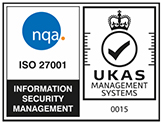ATTENTION PROPERTY MANAGERS & LANDLORDS!
Whilst not intended to be a comprehensive analysis of the new bill, solicitor Ryan Heaven in our specialists Landlord & Tenant team has focused specifically on parts of the Renters (Reform) Bill that either build upon the White Paper, or weren’t given a mention.
S1 - Monthly rent maximum - calculations for transferring rental periods > one month into monthly.
S2 - ASTs are obsolete! Now all ASTs will be assured tenancies ("ATs").
S3 - Section 8 Notices for rent arrears grounds (8, 10 and 11) are increasing in notice period to four weeks, from two.
S7 and 8 - Tenant's pet request process is formalised.
S9 - A landlord must provide a 'written statement of terms' - anyone who has been following the changes in Wales will be familiar with this terminology. It's essentially a skeleton of a tenancy agreement with the core terms (parties, property, rent etc.) listed.
S10 - provides a 'DO NOT DO THIS' list for landlords, including giving a tenancy with a fixed term, trying to serve a Notice to Quit/S21, or serving a S8 notice on grounds that they know they cannot rely upon. There are penalties for this set out in S11 and 12 varying from a £5k fine, to a £30k penalty if prosecuted.
S14 provides for statutory tenant notice periods of not less than two months' notice. Until now we've been relying on a Notice to Quit interpretation as explored in Laine v Cadwallader. This is also something that Wales has introduced. S15 allows for a very wide interpretation of 'giving notice in writing' and suggests that a notice sent by text or email would be a valid notice. Obviously the same is not true for a landlord attempting to give notice. There's no reason to believe that a tenant will need to give notice to expire in line with the fixed term as that still operates under the principles of effluxion of time (I love saying that phrase).
S19 relates to the obsolete restriction on S21 notices if the deposit has not been dealt with correctly. As ASTs are now ATs, there is a requirement for ATs to have their deposits protected. A S8 notice cannot be served (unless it is on grounds 7A or 14) if the deposit has not been protected properly (within 30 days) or otherwise returned. This is a massive restriction that previously did not exist for S8 notices.
S21 (RIP) is a mostly academic point, but it states that a tenancy for a fixed term of 7 years is not an AT or AST. This was previously left open and so it was perfectly possible (if no other restriction applied) for a 99 year lease on a flat (for example) to be an AST. This is just a bit of tidying up I think.
S24-S29 - there is a redress scheme that all landlords must join (unless they are already voluntary members of an existing redress scheme). As this is being fleshed out through future regulations there is not much to talk about here. There are penalties for landlords who fail to join.
S32-51 - There is a landlord database in which the landlord and the property must be registered. Both of these registrations generate a unique 'identifier' code and this must be put on marketing materials. A property cannot be let if the landlord and the property are not on the register; there is a penalty of up to £5k for a breach, but this can go up to £30k if there is a criminal prosecution.
New/Amended Grounds for Possession:
Ground 1 (Amended) - 2 month notice - Does not appear to require a landlord to notify the tenant that this ground may be relied upon, which makes serving it much easier.
Landlord requires property to house: themselves, their parent, grandparent, child or grandchild. Also their partner, and partner's parent, grandparent child or grandchild.
Cannot expire earlier than month 6 of the tenancy agreement.
Ground 1A (NEW) - 2 month notice - Landlord "intends to sell the property". That's it! Nothing more substantial than an intention.
Cannot expire earlier than month 6 of the tenancy agreement.
Ground 5C (Amended, formerly Ground 16 - 2 month notice. Now a mandatory ground rather than a discretionary one.
If the tenant is an employee or ex-employee and no longer requires the house to serve their employment contract then they can be given this notice.
Ground 6A (NEW) - 2 month notice - this notice can be served if there is some form of planning breach, improvement notice, prohibition order, or licensing problem. The idea is that the landlord should not be able to let the property whilst in breach of these things.
Ground 8, 10 and 11 - 4 week notice, up from 2 weeks.
Ground 8A (NEW) - 4 week notice - if, within a 3 year period of time before the S8 Notice is served the tenant is in at least two months' worth of arrears (or eight weeks' worth, if rent is not paid monthly) on at least three separate occasions.
This is an additional rent arrears ground that can be relied upon and will work even if Ground 8 is voided by the tenant clearing the arrears before the hearing date. It is not expressly clear whether this is a mandatory ground because Ground 8 was the final mandatory ground and this comes directly after it. I think it is a mandatory ground because otherwise it would appear after 'Part II Grounds on which Court may order possession'.
Transitional Provisions - S67 and Sch 4.
Transitional Provisions - S67 and Sch 4.
Application Date ("AD") and Extended Application Date ("EAD") to be set by Sec. of State. This will be a date after the Bill is passed so we are still a very long way away from this yet.
S67, the bill will apply to:
- All new tenancies from AD
- All existing tenancies from EAD
- When an AST goes period after AD but before EAD, it becomes an assured tenancy.
Transitional Provisions only apply to existing tenancies.
1a and 1b only apply to existing tenancies where the rental period is more than one month; this bit was by far the hardest bit to understand but luckily it won’t affect too many tenancies.
1a. Rent periods beginning on or after EAD, monthly rent starts when the existing rental period ends. E.g. EAD date 1st April, rent period ends on 1st May; monthly rent starts from 2nd May.
1b. If EAD is on the day when a rental period would have begun, it becomes monthly at that point. If EAD falls within the rental period then it becomes monthly on the first day after that end of that rental period.
Note: there is a calculation for how to calculate the monthly rent at S1(5) which is (Rent for period/Days inside period) x 30.42 = MONTHLY RENT. E.g. bi-monthly rent = £6,000. £6000 (rent for period) / Days inside period (61) = £98.36 x 30.42 = £2,992.11 per month. Note that this is not just £6,000 divided by 2, it is different!
2. Sections 1 to 20 of the Bill do not apply to existing tenancies until it the tenancy becomes an assured tenancy, which occurs when it goes periodic, or by the passing of the EAD, whichever comes sooner. THE MOST IMPORTANT IMPLICATION OF THIS IS THE CUT OFF DATE FOR S21s TO BE SERVED: the day before it goes period, or the day before the EAD, whichever happens sooner.
3. Before EAD, S21 can be served and issued on and tenancy remains an AST until the court case is concluded or the S21 notice becomes invalid due to time passing (six months from the date of service).
5. Can use existing rent increase clauses until EAD.
6. If AST in writing, don't have to give LL info as per S9, but do need to give some other information - though that information is to be confirmed, and I imagine it will look a lot like the S9 information. If AST is oral then need to give S9 info by EAD date.







